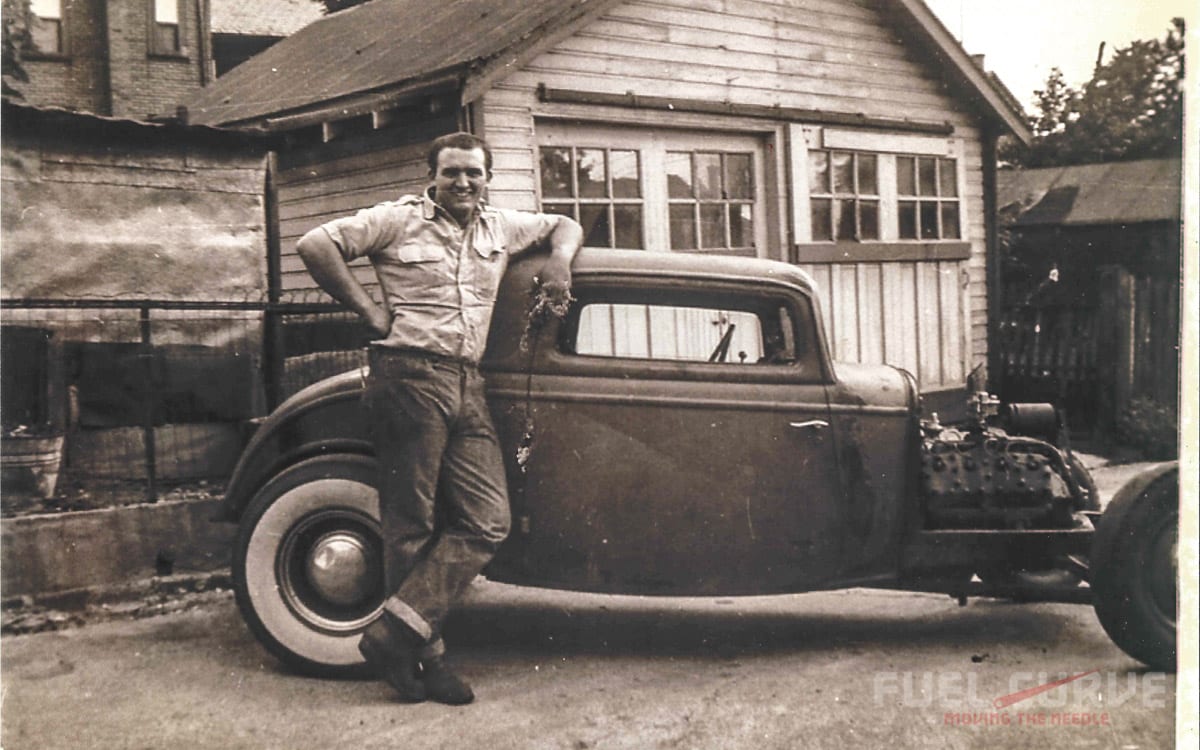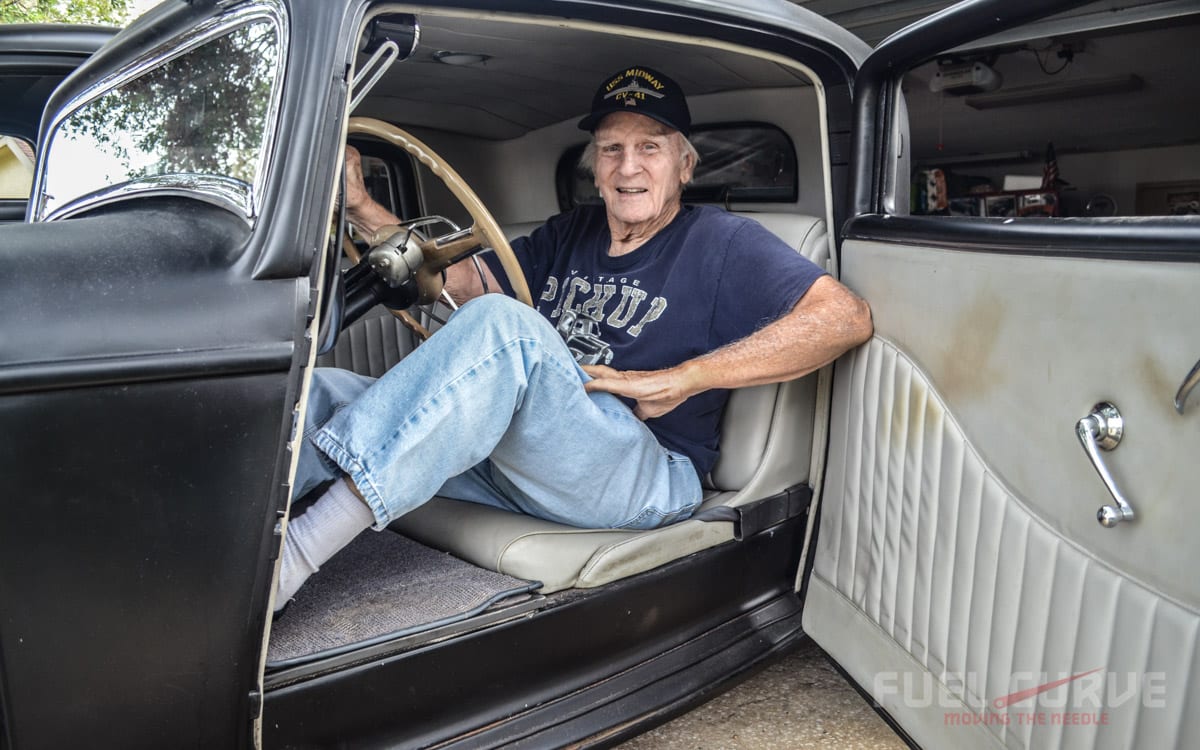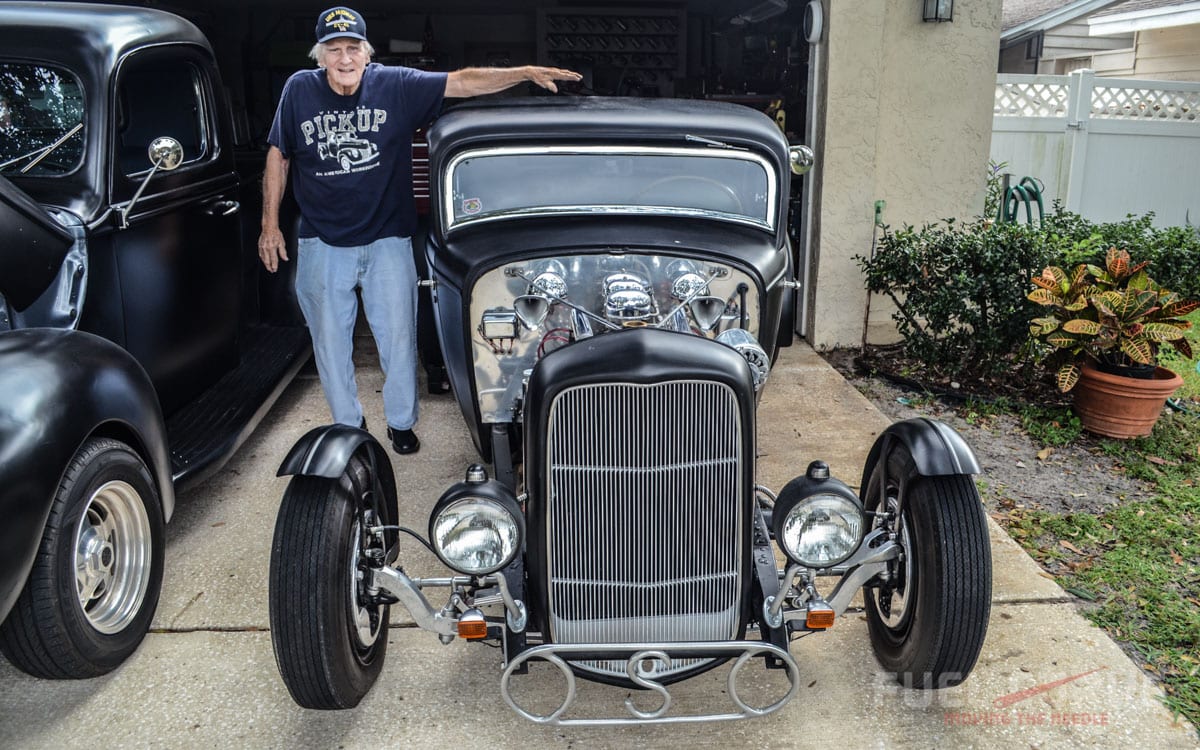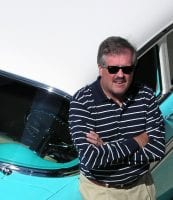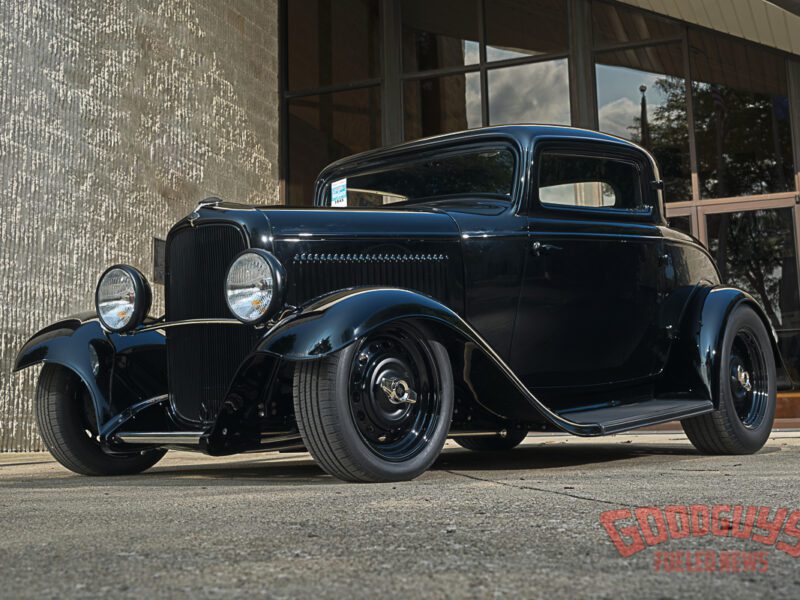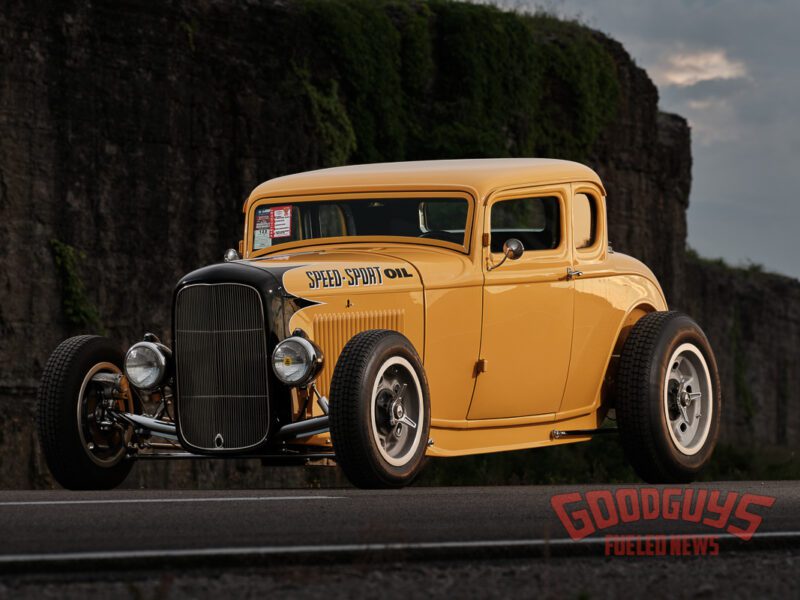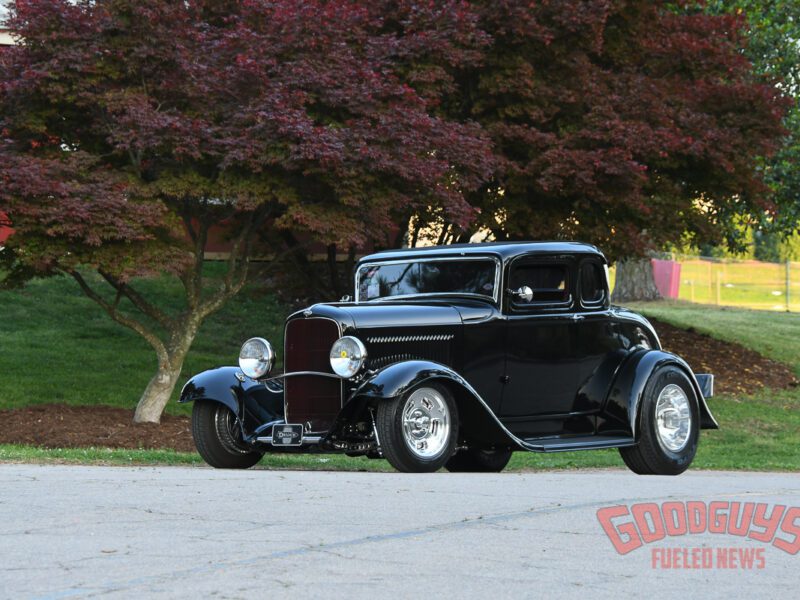Time Capsule – Ron Stetter’s 1932 Ford Street Survivor
Ron Stetter’s 1932 Ford street survivor might make you might think the chopped, channeled, primered, flathead-powered three-window coupe is a recent interpretation of an iconic Fifties ride. With today’s fascination of traditional hot rods, it would be logical to assume it’s a fresh ride made to look old.
But you’d be wrong. Sixty-five years wrong.
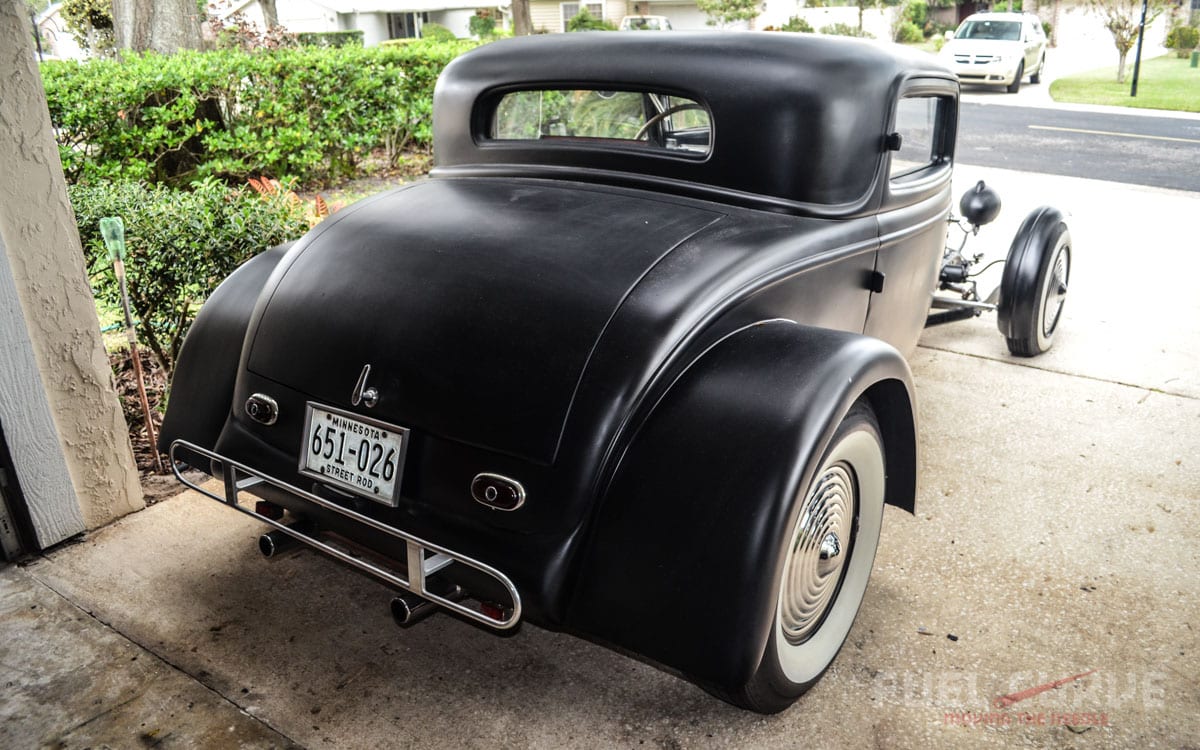
The hot rod you see today in Ron’s Orlando, FL, garage is virtually the same ride he built in 1952 in Altoona, PA. And so is the ’40 Ford pickup that he acquired that same year. The tires and 12-volt electrical system aren’t vintage 1952, but almost everything else is.
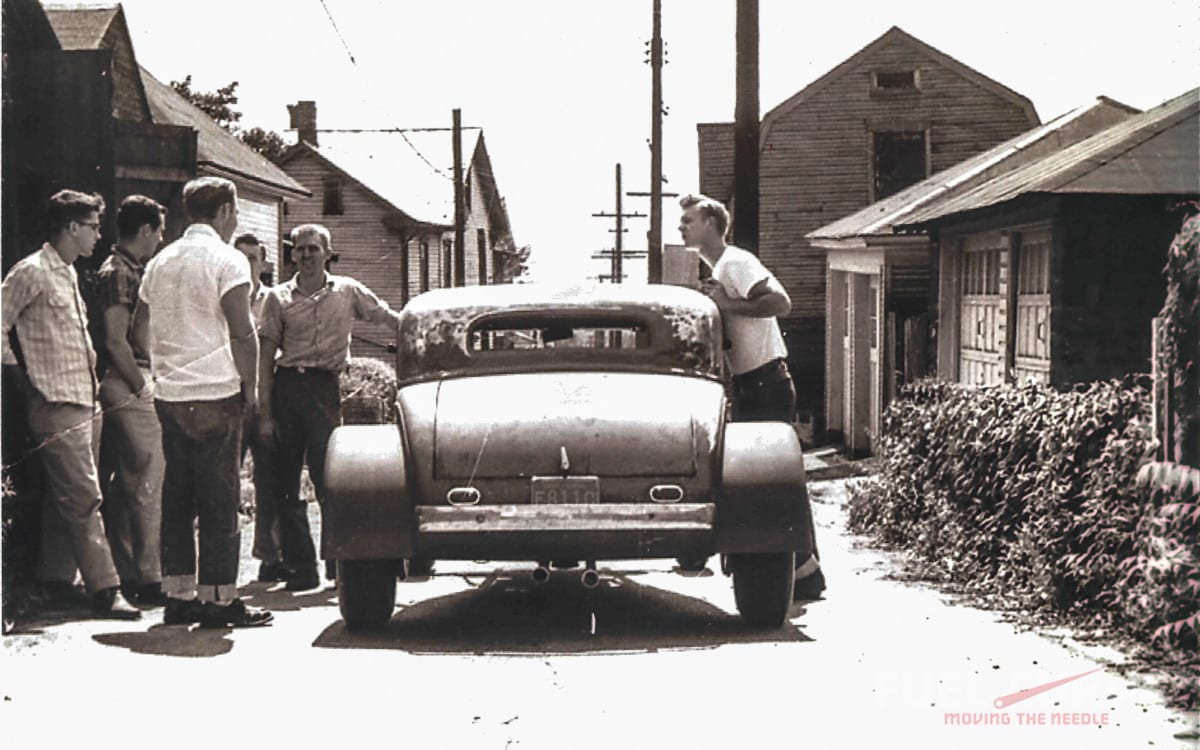 A four-year stint in the Navy gave Ron plenty of time to daydream about building the ’32. Back home in Altoona, PA, Ron and long-time friend Ray Zeak jumped into action: the coupe for Ron and a ‘32 roadster for Ray.
A four-year stint in the Navy gave Ron plenty of time to daydream about building the ’32. Back home in Altoona, PA, Ron and long-time friend Ray Zeak jumped into action: the coupe for Ron and a ‘32 roadster for Ray.
 Ray’s family garage provided the space and a steady dose of junkyard engineering procured the components.
Ray’s family garage provided the space and a steady dose of junkyard engineering procured the components.
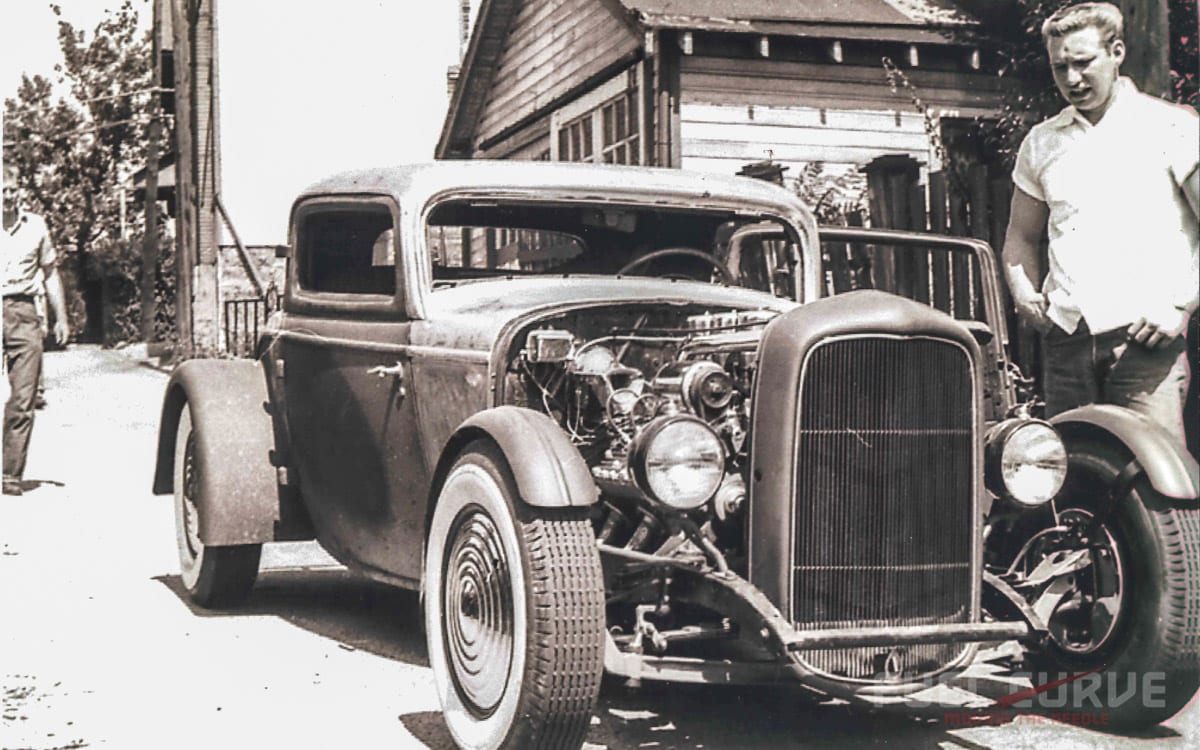 Ron’s day job required travel through parts of Pennsylvania, Ohio, Maryland and West Virginia, giving him the opportunity to find a suitable ’32. While in Marietta, OH, he heard about a ’32 three-window coupe that was being turned into a dirt-track racer. Ron talked the owners into selling him the coupe for a couple of hundred dollars and he flat-towed it back to Altoona.
Ron’s day job required travel through parts of Pennsylvania, Ohio, Maryland and West Virginia, giving him the opportunity to find a suitable ’32. While in Marietta, OH, he heard about a ’32 three-window coupe that was being turned into a dirt-track racer. Ron talked the owners into selling him the coupe for a couple of hundred dollars and he flat-towed it back to Altoona.
“They were hard to find in those days,” Ron said. “It was all torn apart. The body was OK; that’s all I wanted.”
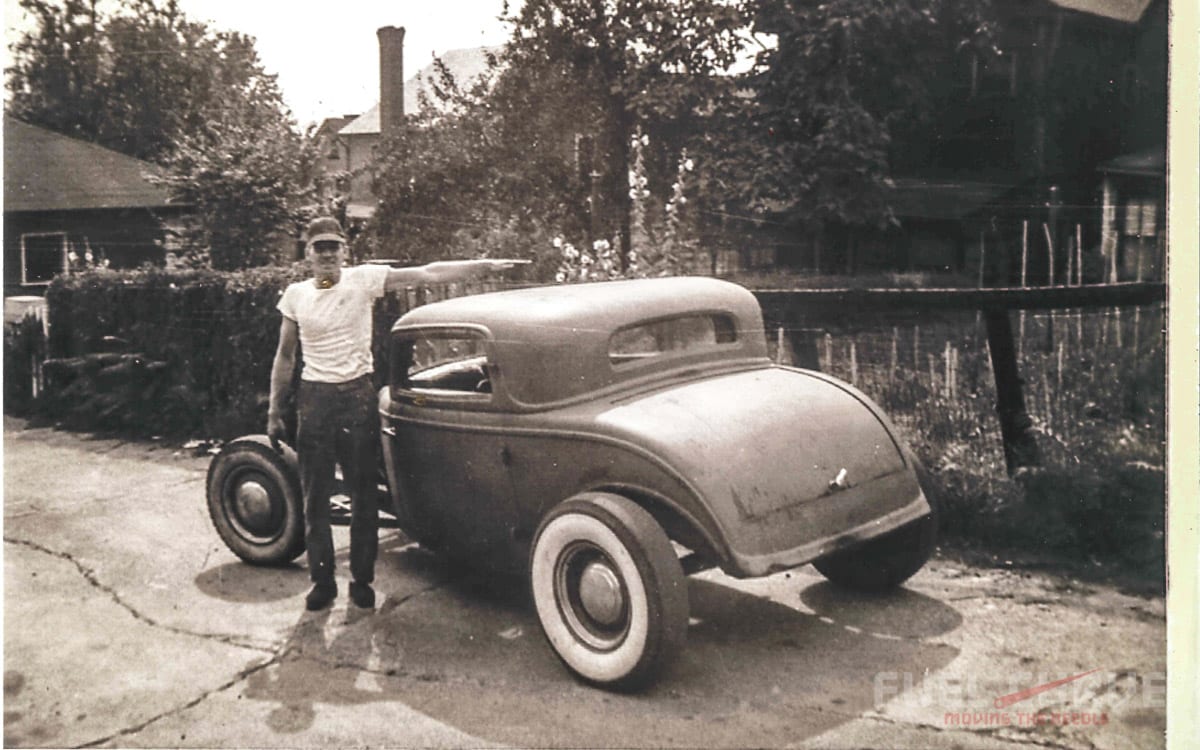 That’s when Ron and Ray got busy. The three-inch chop and other welding chores were accomplished with acetylene made from carbide, with stick welding powered by a Model A engine turning a generator. The builds took about a year.
That’s when Ron and Ray got busy. The three-inch chop and other welding chores were accomplished with acetylene made from carbide, with stick welding powered by a Model A engine turning a generator. The builds took about a year.
“We were single and we worked on the cars all the time,” Ron said. “We built our own torches, too.”
The top was chopped three inches and channeled over the frame. The radiator cowl leaded smooth, cowl vent eliminated and the roof insert filled.
The fenders (they were required in Pennsylvania then) required a dose of hot rodder ingenuity. The fronts were made from spare tire rings on ‘30s era up-scale cars. The backs were not so easy.
Ron discovered an NOS pair of Model A fenders, but the radius was wrong for the coupe, so Ray adapted them to fit the roadster.
The back ones, however, are a different story.
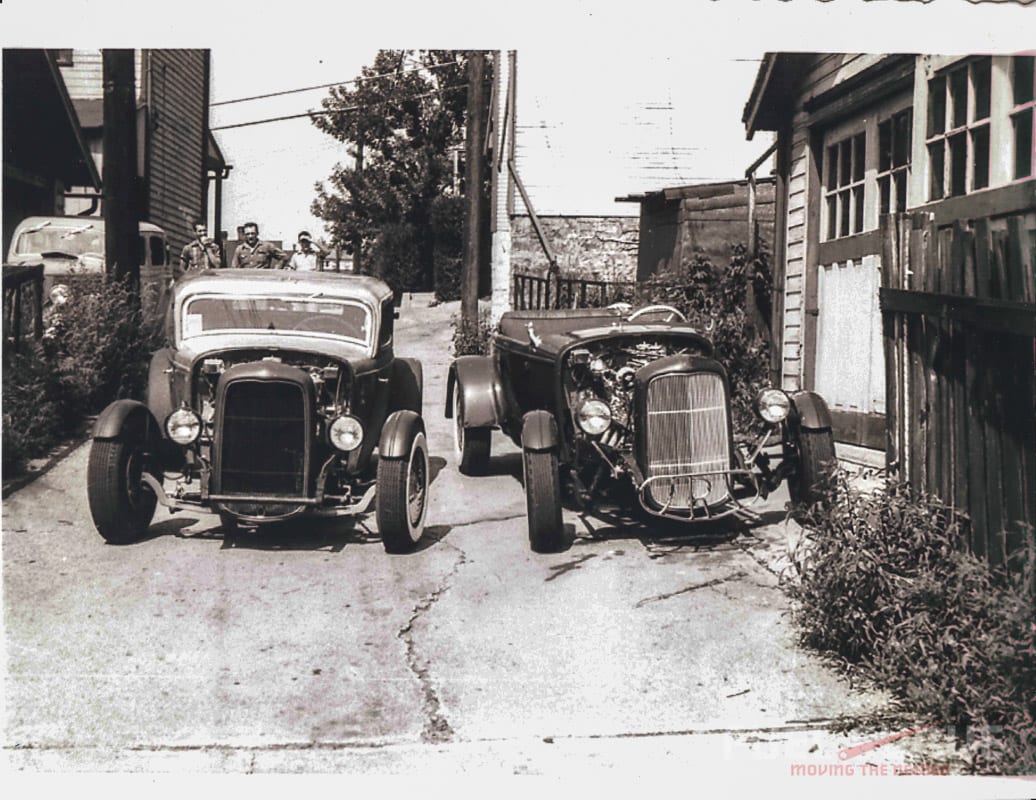 “In those days old Deuce fenders were usually crushed and I wanted to get it inspected,” Ron said. “We built a pair from cold-rolled steel but the state would not pass the inspection because of the sharp edges.
“In those days old Deuce fenders were usually crushed and I wanted to get it inspected,” Ron said. “We built a pair from cold-rolled steel but the state would not pass the inspection because of the sharp edges.
“As luck would have it, in a junkyard owner’s front yard was a work truck that had been destroyed by a falling tree.”
The fenders looked like they would fit. Ron cut them free from the rusted hulk and took them home. They weren’t wide enough, but Ron solved the problem by cutting off the rounded edges and grafting them onto the cold-rolled steel fenders. Problem solved.
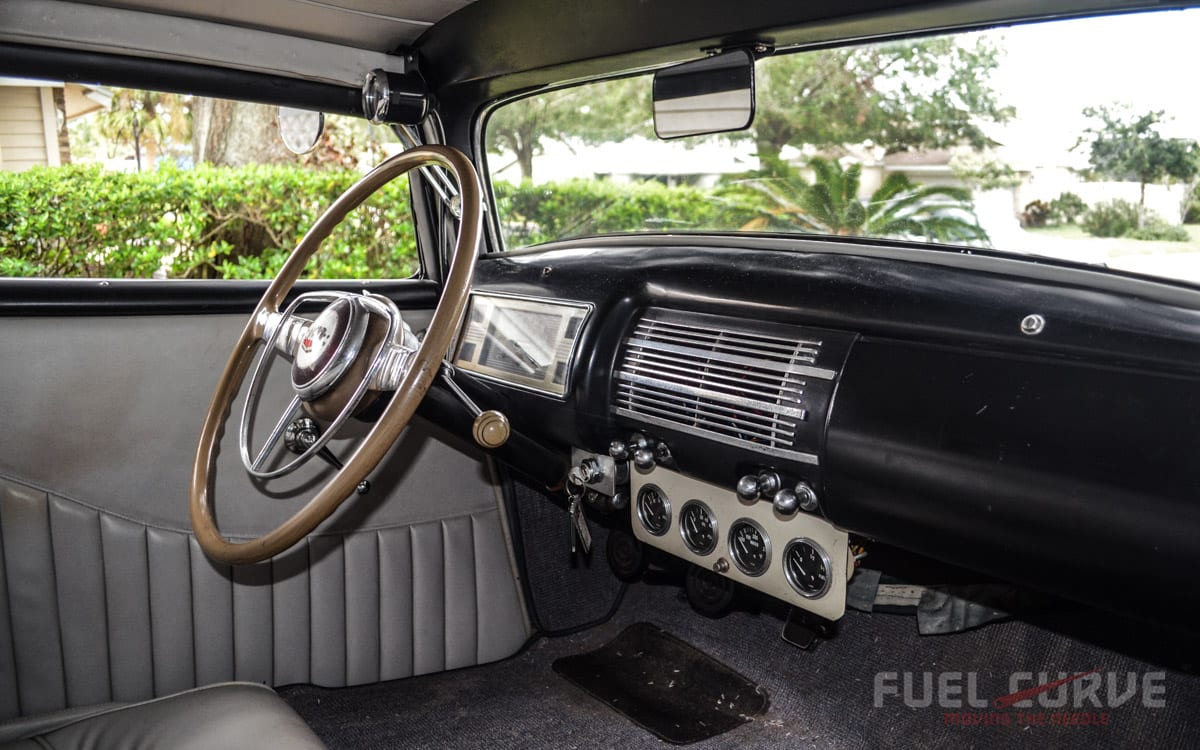 Next, the dash from a junked ’40 Ford was massaged to fit the ’32. It houses Stewart Warner gauges. Tuck and roll upholstery, vintage Ford steering wheel and a column-shifter complete the interior.
Next, the dash from a junked ’40 Ford was massaged to fit the ’32. It houses Stewart Warner gauges. Tuck and roll upholstery, vintage Ford steering wheel and a column-shifter complete the interior.
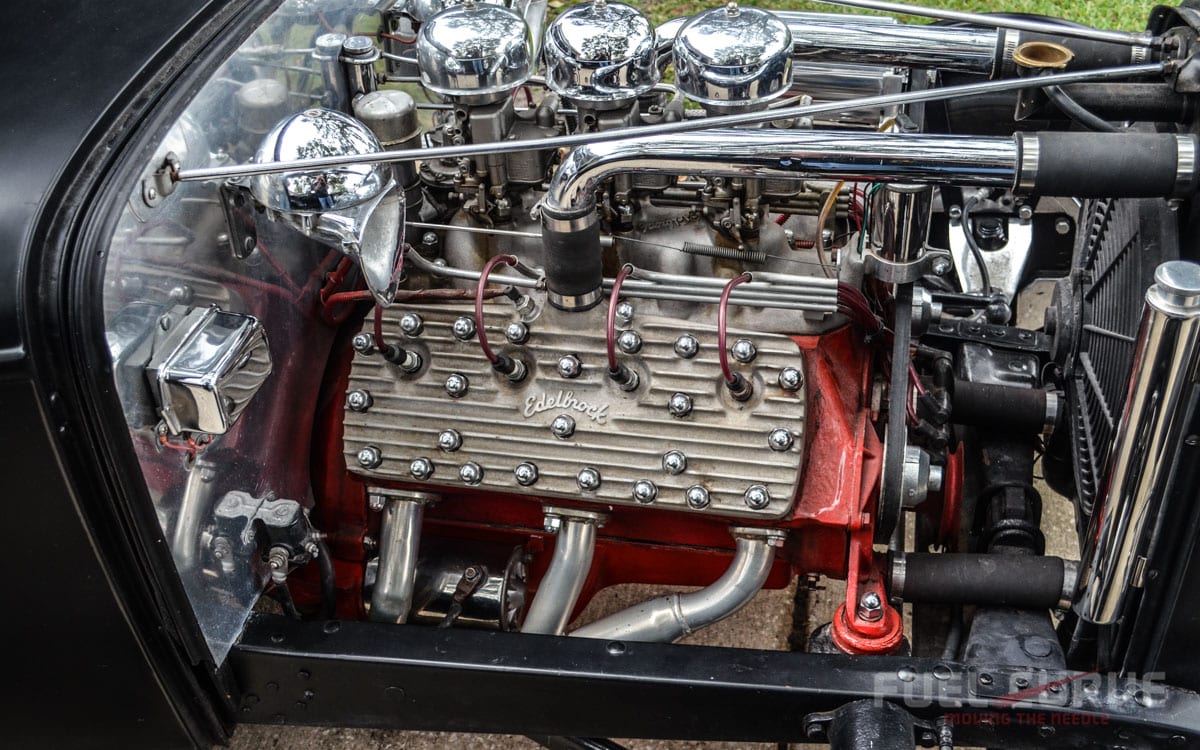 A 59L Ford flathead bored .0125 over and a four-inch Mercury crankshaft resulted in a 276-cubic-inch powerplant that pushes approximately 200 horsepower through a ’40 Ford three-speed transmission with 26-tooth Zephyr gears.
A 59L Ford flathead bored .0125 over and a four-inch Mercury crankshaft resulted in a 276-cubic-inch powerplant that pushes approximately 200 horsepower through a ’40 Ford three-speed transmission with 26-tooth Zephyr gears.
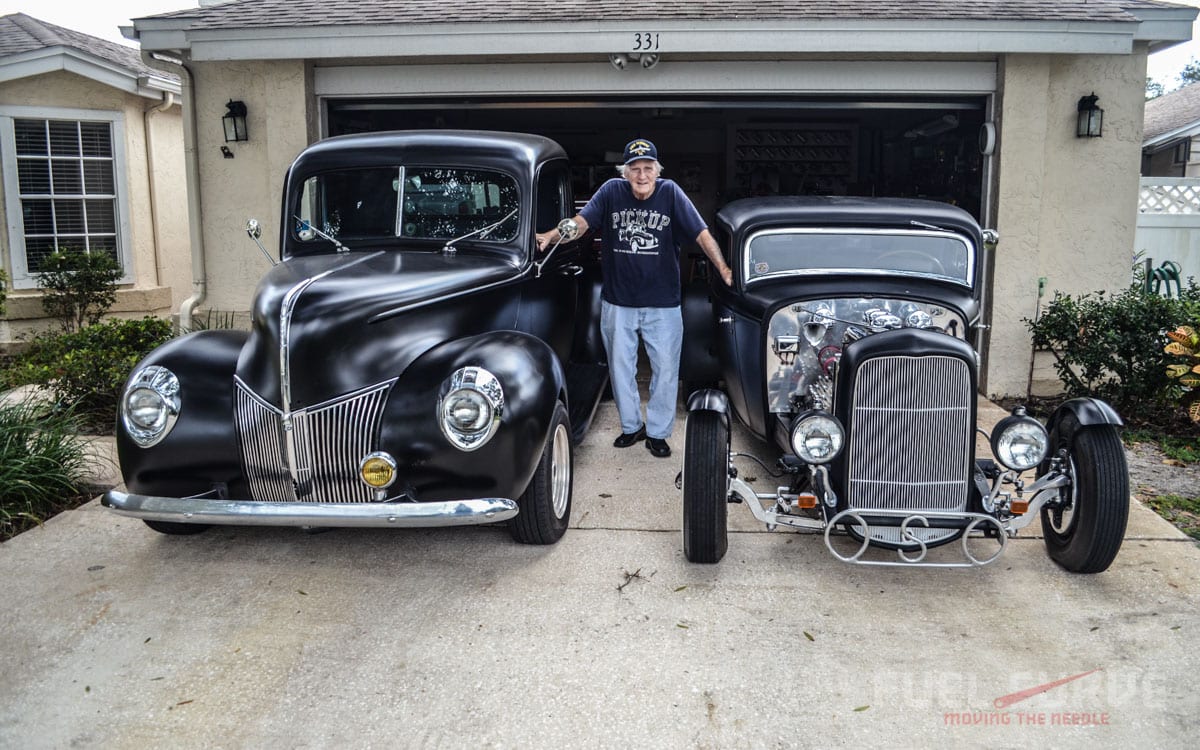 Ron’s Duece has won numerous awards, from local shows, Goodguys events to the invitation-only, prestigious Amelia Island Councours d’Elegance in 2015.
Ron’s Duece has won numerous awards, from local shows, Goodguys events to the invitation-only, prestigious Amelia Island Councours d’Elegance in 2015.
In addition, a young documentary filmmaker – Brian Bourke – approached Ron about making a film about Ron and his car. The result was entered in the Gasparilla Film Festival in 2009 and shown in a vintage theatre during the festival.
 The ’40 pickup is a similar story, but with an interesting twist. Driven for years with the original flathead V8, the truck went through a frame-off restoration about 10 years ago in Ron’s two-car garage. That work included a new driveline that had been in Ron’s storage shed for decades.
The ’40 pickup is a similar story, but with an interesting twist. Driven for years with the original flathead V8, the truck went through a frame-off restoration about 10 years ago in Ron’s two-car garage. That work included a new driveline that had been in Ron’s storage shed for decades.
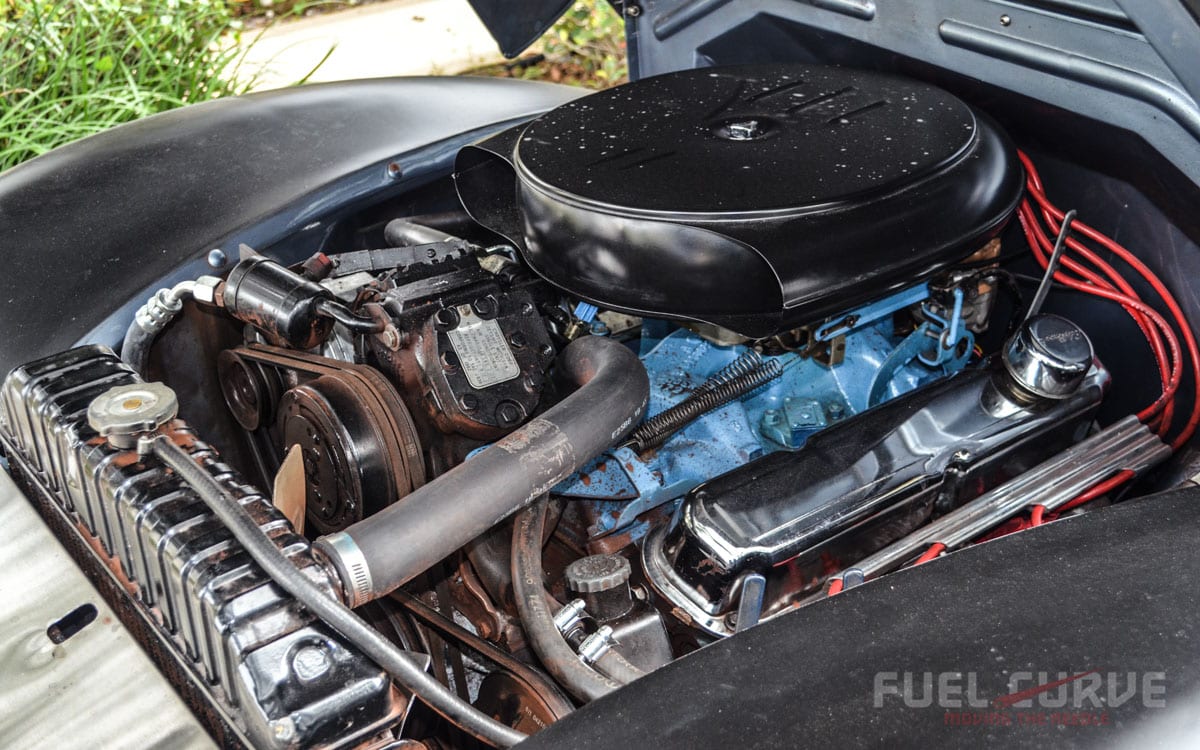 Here’s the story: In the ‘70s Ron worked for Chrysler and through his job he knew the railroad people who transported new Mopar vehicles around the country. In 1975 a train carrying new Chryslers to California derailed, damaging many cars and making them unsellable.
Here’s the story: In the ‘70s Ron worked for Chrysler and through his job he knew the railroad people who transported new Mopar vehicles around the country. In 1975 a train carrying new Chryslers to California derailed, damaging many cars and making them unsellable.
Through his railroad contact, Ron was able to buy a damaged 1975 Chrysler Cordoba (remember Corinthian leather?) and salvage a 360 V8, transmission and rear end – with less than one miles on them. The Mopar drive train now powers the truck around the Orlando area.
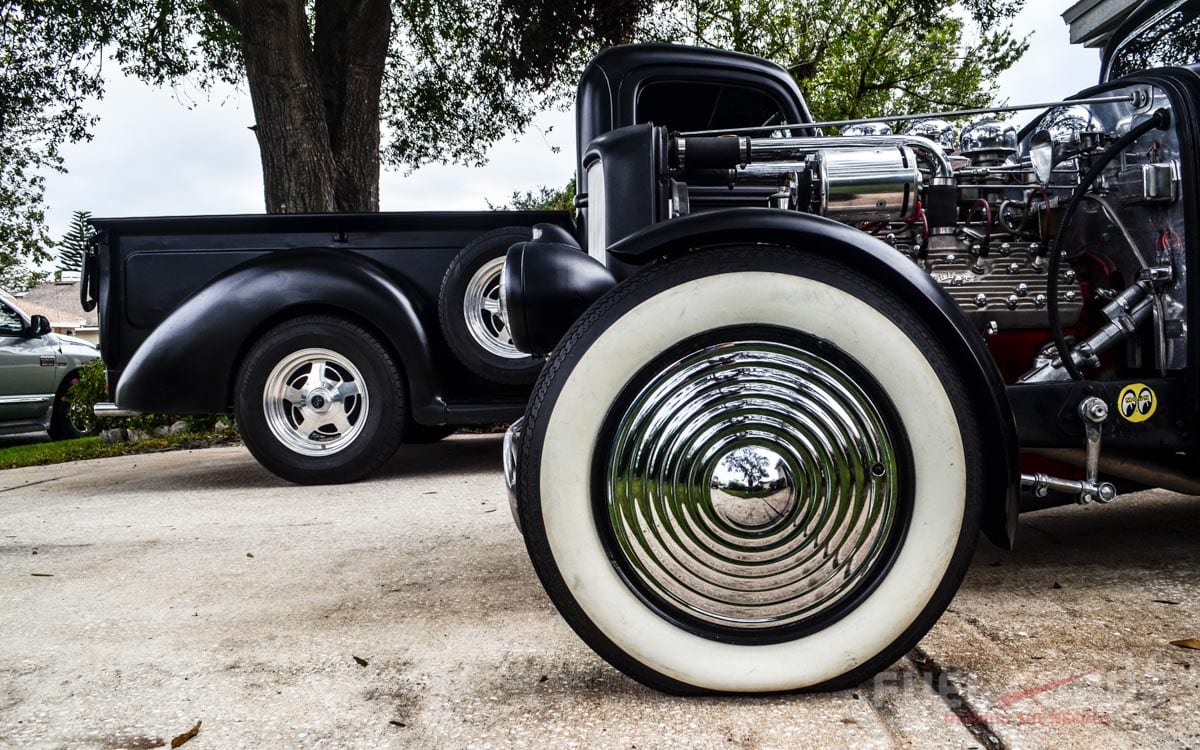 And, because we know you’re interested: Neither vehicle is for sale or will be. They will stay in the family, Ron says.
And, because we know you’re interested: Neither vehicle is for sale or will be. They will stay in the family, Ron says.

